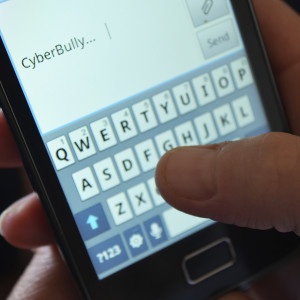Cyberbullying at School: Protecting Your Child

A Guide to a School’s eSafety Responsibilities
An Ofcom study last year showed that 88% of children aged 5 - 15 were accessing the internet. Combine this with the fact that nearly one in ten children receive their first phone aged just five, and understand how the internet has allowed people to communicate at any moment, and from anywhere, and you can see why cyberbullying is such an important topic. Even the United Nations has undertaken a global study of the impact and extent of ‘cyber violence’ towards women and children.
Everyone is aware of the negative effects of bullying, but do you know what constitutes cyberbullying, to what extent it is illegal, and what responsibilities a school must uphold? This blog will shed light on the laws and the best way to report cyberbullying.
How to spot if your child is being Cyberbullied
The same Ofcom study informs us that 26% of children don’t tell anyone when they encounter cruel behaviour online, that is why you must look out for the indicators yourself. These consist of any sign of trauma or irregular behaviour during or after using a computer, or after receiving any form of message on their phones, an unwillingness to go to school or social events, and most importantly shying away from any questions about what is causing this trauma.
Schools, the Law and Cyberbullying
“By law, all state (not private) schools must have a behaviour policy in place that includes measures to prevent all forms of bullying among pupils. This policy is decided by the school. All teachers, pupils and parents must be told what it is.” This is the simplest definition of a school's responsibility by law. If you are a parent and you are unsure of your child’s school’s bullying policy, the best course of action is simply to check with a teacher.
Schools are legally responsible for student welfare even outside of a school's physical boundaries. “Head teachers also have powers to respond to bullying outside of school premises, and to search for and confiscate items that may have been used to bully or intimidate” as the Anti-Bullying Alliance rightly reminds us. These powers extend to the ability to reprimand cyberbullies.
Reporting Cyberbullying
There are two options a parent has when reporting the cyberbullying of their child - a) reporting it to their child’s school or b) reporting it to their local authorities (police/social services).
You should always aim to open a dialog with your child’s school first. Not only is this less stressful for your child, but it allows for the welfare of your child to be protected in the future. A school that can solve your child’s cyberbullying problems should have a good follow up policy, preventing further harm being done. If the situation escalates the school can contact local authorities for you, so try and keep them involved whenever possible.
If you feel that this option has been exhausted, the school is unwilling to involve a third party, or you think that their policy towards cyberbullying is inefficient, then you must contact your local authorities independently. In both situations make sure you have strong evidence that your child is being cyberbullied. Do not delete any of the messages or harmful content as these will help build your case.
Cyberbullying is illegal, and your child’s school must act accordingly. If you suspect that your child is at risk, contact their teacher or headteacher immediately.
We work alongside education bodies and children's charities to provide the highest standard of child protection and anti-bullying training. To find out more about these courses, click here.
Return to news